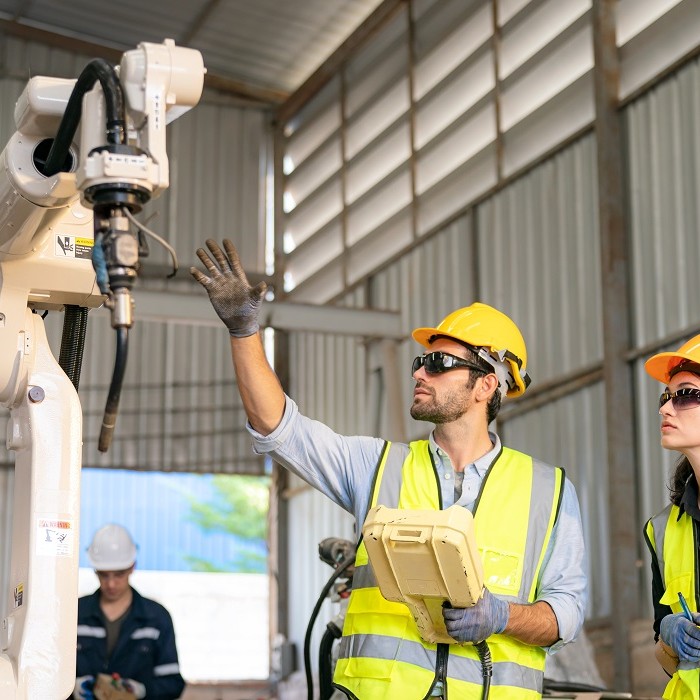Artificial intelligence company OpenAI altered the course of human history when it introduced ChatGPT in November 2022. Since then, it’s become clear that generative AI will fundamentally change how people work, learn, create and communicate. It’s even changing how people dress.
Generative AI could create up to $275 billion in operating profits for the apparel, fashion and luxury sectors within the next three to five years, according to consulting giant McKinsey & Company, which says several generative AI fashion use cases are already emerging.
“From codesigning to speeding content development processes, generative AI creates new space for creativity,” McKinsey observed in its March 2023 report Generative AI: Unlocking the future of fashion. “Within product innovation, marketing, and sales and customer experience in particular, the technology can have significant outcomes.”
Indeed, generative AI is already transforming the global fashion industry from nose to tail by streamlining the design process, lowering manufacturing costs and improving the traditional retail experience.
“Generative AI is not just automation — it’s about augmentation and acceleration,” McKinsey continued. “That means giving fashion professionals and creatives the technological tools to do certain tasks dramatically faster, freeing them up to spend more of their time doing things that only humans can do. It also means creating systems to serve customers better.”
AI as the Future Catalyst in Fashion Design
The world’s most forward-thinking fashion houses are already integrating AI into the design process, according to Kenneth Loo, co-founder and CEO of Chapter 2, a communication and event agency that works with fashion brands like 9dcc, The Hundreds, TOMBOGO, Nike, No Sesso and The Fabricant.
“[AI] is heavily being used in the creative process,” explained Loo, who said fashion designers view AI as a radical creative tool that helps them think outside of the box and avoid repetition.
“AI allows them to create something really fast and generate new, very novel ideas.”
Traditional brainstorming is often hindered by the unconscious biases, narrow outlooks, or lack of knowledge of its participants. Artificial intelligence, uninhibited by these very human traits, can provide fresh perspectives and serve up unique or unorthodox ideas.
While established designers are beginning to use AI on an experimental basis, the next generation of designers already views AI as a fundamental tool in the creative toolbox, according to Jeongki Lim, assistant professor of strategic design and management at the Parsons School of Design at The New School in New York City.
Lim said students are always looking for new technologies and are eager to “engage AI in the creative process.”
He’s optimistic about how AI will impact the fashion industry and advises up-and-coming designers to “embrace it, but with a clear eye.”
“You have to understand what AI is, what it’s capable of doing and what’s going on behind the scenes,” said Lim, who predicts that AI will soon be viewed as a standard part of fashion design.
“Today, we can’t imagine the days without a smartphone. It’s beginning to become like that with these type of creative AI tools. Capabilities are just slipping into everyday creative practices and work.”
While generative AI has undoubtedly grown to become part of the cultural zeitgeist, according to Pew Research Center, only 23% of American adults have ever used its most popular tool, ChatGPT.
As that number continues to climb, some skeptics worry that generative AI might displace fashion designers, but Canadian architect Tim Fu thinks it will actually empower them.
“AI is a technology that’s giving designers superpowers in a way because it really feels you could just take your ideas and just implement it very rapidly, very effectively,” Fu — who is collaborating with fashion house Sprayground to create a collection of futuristic streetwear using generative AI — told online publication AI Business in an April 2023 interview.
“And you don’t need software expertise for rendering specific types of products. It’s just image-oriented, and you’re able to really test the water with every field in a way.”
Optimizing Fashion Manufacturing with AI
It’s not just fashion designers who can benefit from generative AI. Apparel manufacturers also view AI as a groundbreaking technology that promises to improve technical design and boost profits in an extremely competitive field.
“We’re currently exploring how to integrate AI into the design and manufacturing processes,” said Houman Salem, founder and CEO of ARGYLE Haus of Apparel, a Los Angeles-based fashion design house and manufacturing company.
“Right now, we’re exploring Midjourney and other visual AI tools for initial garment design — with the goal of launching an all-AI-generated clothing brand in the future.”
AI has the potential to revolutionize more than the ideation phase, according to Salem, who said that phase constitutes only 10% of the manufacturing process and less than half of the actual design work.
Technical designers work within the manufacturing arm of the industry and shoulder most of the design responsibilities. These specialists may soon use AI to handle repetitive tasks, including describing sewing details and points of measurement, producing a bill of materials, and understanding how certain fabrics interact and stretch when worn.
“In the future, we’d like to bring AI into the technical design process,” Salem continued. “[Technical designers] speak another language compared to fashion designers. They’re intermediaries between fashion designers and the production team, and responsible for creating the design tech pack.”
These specialists select specific fabrics for strength and durability and extend the longevity of garments by reinforcing weak points.
Despite the potential of AI in fashion industry applications, Salem predicts that it’s not yet advanced enough to impact production itself.
“Humans still have to push a needle through a hole,” he said. “AI cannot touch 50% or more of the human labor involved with production.”
How Generative AI is Reshaping Fashion Retail
The retail arm of the fashion industry also views generative AI as a game-changing tool and is already building it into online shopping platforms, according to Carlanda McKinney, founder of Bodify, who said retailers are using AI to provide a personalized consumer experience, reduce waste and help consumers select the right clothing for their body type.
“When I started Bodify, it was really just to solve a personal problem,” McKinney said. “I shop online a lot and I got really sick of returning things. The fit finder tools I was using were never right, so I just wanted to build something better.”
Even when the garment technically fits, “it doesn’t fit quite right,” explained McKinney, who said the transition to online shopping has led to a massive increase in the number of fit-related returns, which Bodify reduces by more than 30%. It accomplishes this by using AI to help consumers better understand how the clothes they choose will fit their body specifically.
“We get the spec sheets of every item of clothing that a retailer carries,” McKinney said. “We codify all of that data and we build algorithms to crawl that data and match the brand data across shopper measurements.”
Bodify’s AI-driven platform also assigns clothes a confidence score ranging from 0 to 100, which helps shoppers quantify the fit.
“We’re taking all of this information and presenting it to the shopper and saying, ‘You picked a good size — but, just so you know, this particular garment at this particular retailer is typically going to fit tight around the waist or shoulders,’” said McKinney. She believes Bodify’s technology could revolutionize the shopping experience enough to complete the transition from brick-and-mortar stores to online retailers.
Loo agrees.
“[AI] could mark an end to the era of retail from a physical store perspective,” Loo said. “I just don’t think we will be so dependent on that anymore.”
The Ongoing Evolution of AI in Fashion Design
Companies already are seeing powerful benefits from AI-generated fashion, with renowned fashion houses like The Fabricant and Steve Aoki using AI to create avant-garde clothing lines that break conventional molds. There’s now even an AI fashion week.
At the same time, the world’s top fashion programs are preparing the next generation of designers to view AI as a standard tool and essential part of the contemporary design process.
All this as AI begins to impact garment manufacturing and purchasing, too.
“Generative AI has the potential to affect the entire fashion ecosystem,” McKinsey & Company wrote.
“Fashion companies can use the technology to help create better-selling designs, reduce marketing costs, hyperpersonalize customer communications, and speed up processes. It may also reshape supply chain and logistics, store operations, and organization and support functions.”
And fashion, of course, is just a slice of a much larger pie.
“AI is the next world-changing technology that really matters,” Salem said. “Ten years from now we will view this as a transformational point in time, after which everything changed.”
Editor’s note: This is an updated version of the article that was originally published on October 25, 2023.
Marcus Taylor has worked as an executive and thought leadership writer for the information technology industry since 2016, specializing in SaaS, healthcare IT, cybersecurity and quantum computing. He is reachable through his website, mtwriting.com.
© 2024 Nutanix, Inc. All rights reserved. For additional legal information, please go here.








